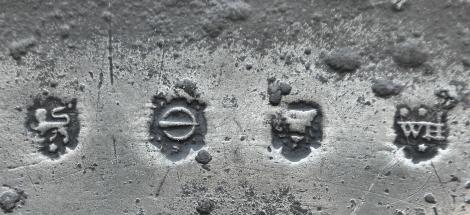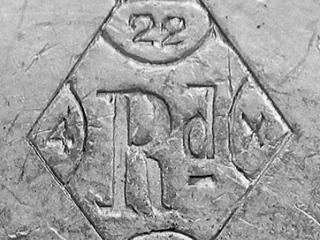Catalogue numbers

In the 19th and 20th century pewterers often produced catalogues of their wares and put the catalogue numbers on the articles themselves. They are normally simple stamped numbers of three, four or five digits, sometimes with a letter as well. They are most common on wares made of Britannia metal. Do not fall into the trap of assuming that a four digit number like ‘1754’ is a date – it isn’t!
Teapots, coffee pots and jugs from Sheffield manufacturers are often stamped with a single digit representing the capacity. Rather confusingly, the digit represents the number of half pints, so ‘5’ means 2½ pints.
In the 19th and 20th centuries, workmen in some of the larger businesses stamped their own number,mark (or occasionally letter) on the piece. If a number is too short to be a catalogue number and doesn’t represent capacity, it is probably a workman’s number.
